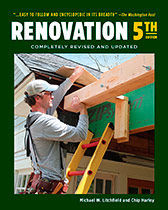Podcast 303: Advanced Framing, Wood Floors in a Bathroom, Unsafe Pools
Matt, Rob, and Patrick hear from listeners about integrating podcasts and magazine content and electric radiant panels before taking listener questions about advanced framing, installing wood floors in a bathroom, and feeling good about fellow tradespeople.
Follow the Fine Homebuilding Podcast on your favorite app. Subscribe now and don’t miss an episode:
 |
 |
Help us make better episodes and enter for a chance to win an FHB Podcast T-shirt:
www.finehomebuilding.com/podcastsurvey
Ted writes in with thoughts on how to improve FHB. Tyla shares her experience with electric radiant panels. Anders points out that we never actually talked about advanced framing in a recent discussion about advanced framing. Daniel wants to know if wood floors are allowed in a bathroom and how to deepen stud cavities for thicker insulation. Pool expert Ben is glad there are other tradespeople out there trying to do a good job.
Editor Updates:
- Rob’s new siding
- Matt’s compost and garden
- Jeff’s painting
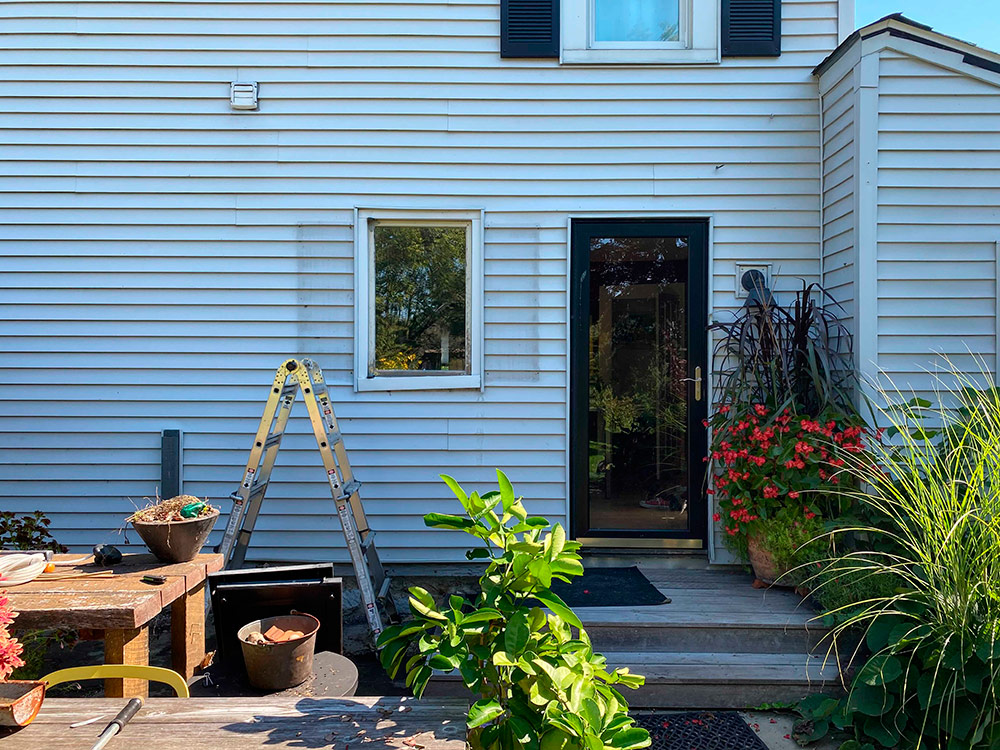 |
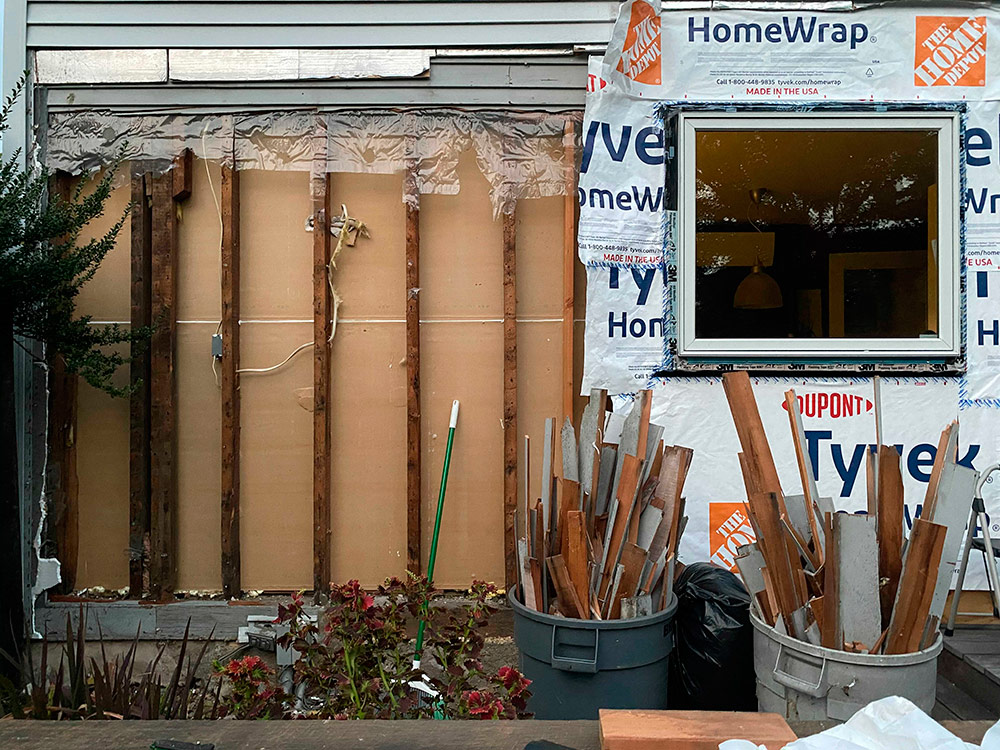 |
 |
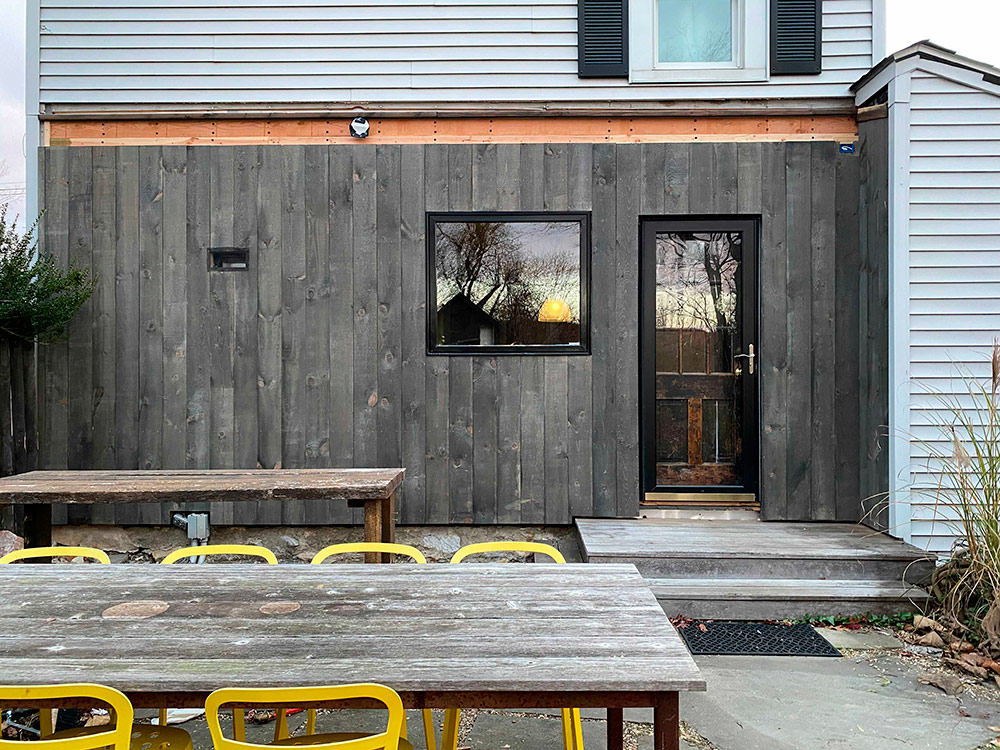 |
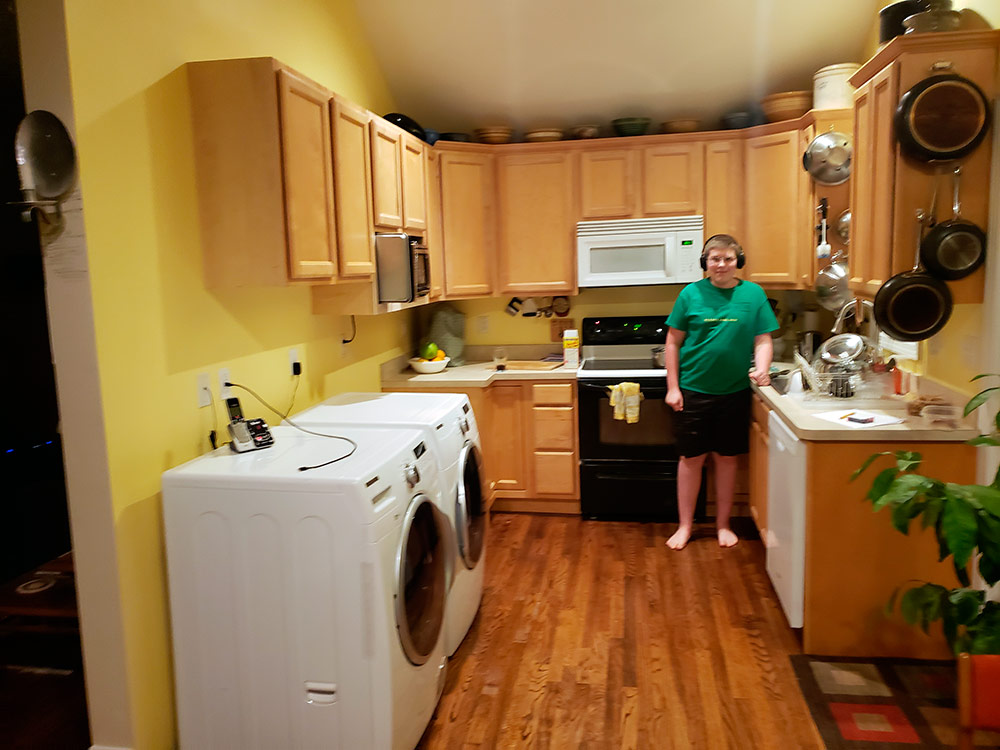 |
Related Links:
- Why We Need Building Sensors – Carpenter Ben Bogie discusses the sensors he uses to measure temperature, wood moisture equivalent, humidity, and indoor-air quality.
Listener Feedback 1:
Ted from Southborough, MA writes: Hello Podcast People – One thing I appreciate about your podcast is that I know you actually read all the mail/email that is sent your way. I just completed your survey but found it lacking in my ability to provide feedback on what I want to hear. I started about episode 90, listened to all the back issues, and can’t believe you/we are near 300! Thankfully you’ve moved beyond the fine home sealing podcast.
I’m a residential general contractor and homebuilder. I truly appreciate the quasi-expert advice you provide, the research you do before each episode, and the easy speaking manner all of you have. Plus, you set the bar at experienced DIY not newbie. Sometimes I do find myself yelling at the car radio where I listen that you’re wrong, but mostly I find I learn something new each time I listen. (I’d write more email to you but I’m driving and by the time I’ve landed I’m already onto the new thing).
For the future, I’d enjoy hearing more integration between the magazine and the podcast. Your magazine has plenty of great, well researched articles. But when I read them I always have additional questions, etc. Perhaps 15 minutes Q&A with the author to drill down deeper. Perhaps go over some of the articles that didn’t make the magazine cut?
As for the magazine, there’s often information that didn’t make the cut too. perhaps a QR code that accesses that additional info online, including floor plans, elevations, other architectural documents, product specs, etc.
I wish you all the success in what you do (because it makes me more successful in what I do.)
Listener Feedback 2:
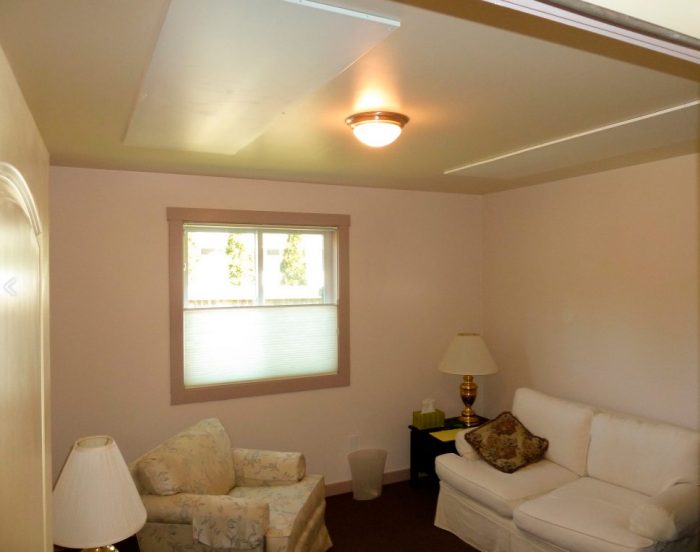
Tyla writes: Hi: Just finished listening to podcast #299, and was interested by the discussion of heating an outdoor space as well as spot heating a cold area in a house. You mentioned radiant heat as being more efficient and also mentioned electric panel heat.
Well, I have first-hand experience with this since about 18 months ago I installed electric infra-red radiant heat panels in my basement, and have to say they are working great for me. The rest of the house is heated by a forced-air gas furnace, but the basement was always cold (nice in the summer, not-so-nice in the winter). It is a finished space but it’s normally only used when I have guests visiting, so I didn’t want to improve the ducting because then I’d be heating it all the time, which seemed like a waste. Baseboard electric was not great because I have tons of shelving down there pushed up against the walls, and while I considered radiant in-floor heating, digging up the floor or even just adding insulation and electric mats seemed like a really big project that would mean I’d have to empty it out of all the furniture and stuff being stored.
Finally I stumbled across these panels, ordered them and had them installed on the ceiling. (Some kinds can also be installed on the wall.) Even though the basement doesn’t have a lot of headroom, the panels are less than an inch thick and are installed flush to the drywall, so it didn’t really affect the height. It was a bit of an adventure because I couldn’t find a local distributor or electrician who had worked with them before. Surprising, since I’m in Toronto, which is a big city! Once they were in, though, the heat has been great. Electrically they are supposed to be hardwired in just like baseboard heaters, and mine are hooked up to thermostats so I can turn them on only when needed, or set the temperature and leave them. The trickiest part for the guys was not the wiring but figuring out how they were designed to be anchored to the ceiling.
Supposedly what’s good about them is they don’t heat the air, but just the surfaces that they face, and you really can feel the heat “hitting” you. It also warms up the furniture and (after 30 minutes or an hour) the floor. It was a great solution for my situation, and I think this form of heat should be more widely known. It might sound like I secretly work for a company that makes them, but really I’d just like them to become common enough that next time I have a project the panels and expertise will be easier to find. 😉 Funnily enough, right after the electricians did my panels, they got a call about installing some in a hot yoga studio — apparently these types of panels are very popular for that use — so I guess my job was good practice for them.
Anyway, I can’t say for sure if they are more efficient than electric underfloor or baseboard heat, although the manufacturers do say that by not heating the air you’re saving energy. But it is definitely easier and cheaper to install or repair than something under the floor! And while it might not work for people with high electric rates or who have frequent power outages, I do think for supplementary heat it’s a great option. My guests and I also agree that the quality of the heat (if that makes sense) is really nice. I don’t always feel warm in the parts of the house that are heated by forced air, but sitting near one of the panels I do.
Regarding your listener looking for outdoor heating — they do make infra-red outdoor heaters as well, although I don’t think in panel form. I haven’t tried outdoor ones myself, but if they work similarly to the indoor kind, they might be worth considering! Failing external heaters or buying everyone a heated jacket, a low-cost, low-tech solution might be giving everyone some of those chemical heat packs for hands, feet, and body to put under their winter clothes. (But that’s not really a home building fix, so maybe off topic.)
I partly wanted to write in about the heating panels because my experience has been good, but partly because when you mentioned them you weren’t very specific about what they were, and the terminology can be really confusing. It took me hours of online research before I found a solution for my problem because I wasn’t using the same terms as in the product descriptions, and I had never heard of this kind of heater before since it’s not super common — even less so two years ago. I started out looking for radiant heat, but most of that info is about either electric or hydronic in-floor heating. And if you look for heating panels, you can wind up with a mix of different products including convection heaters or even European radiators. So I would specifically look for “infra-red” heat.
Finally, I’ve seen claims that not all infra-red heat is the same, that there is “near infra-red” and “far infra-red”. I’m not an engineer, so at that point it gets a bit beyond me. Maybe you know of an expert who could enlighten us all?
Thanks for the podcast, and I hope my experience helps someone find a solution for their cold space.
P.S. — Website I ordered my panels through was infraredheat.ca. They’re a Canadian supplier, but they do have a bunch of info and photos if you’re curious.
Related Links:
Question 1: What do you think about the value of advanced framing?
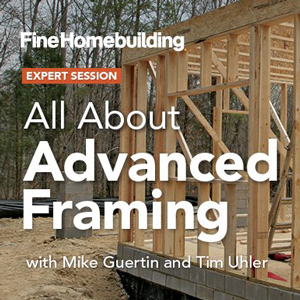
Anders in Sandpoint, Idaho writes, Thank you for bringing up the subject of advanced framing the other day.
I am using advanced framing as often as possible and were looking forward to hearing what you guys had to say about the subject. Too bad you got sidetracked after about 20 seconds and got into what your wish list looks like for the upcoming holiday season. That’s important stuff as well.
Try again….
Related links:
- Framing Project Guide: Advanced Framing
- Expert Session: All About Advanced Framing
- Maximize Insulation in Minimum Headers
Question 2: Can I have a wooden floor in my bathroom? …and other remodeling questions.
Daniel writes, House: Circa 1900 high-post cape with enclosed porch and brick foundation in southern Maine. It was built as seasonal quarters for brickyard workers. I’ve removed all the plaster, fiberglass, and mouse poop from the walls. The attic is going to be done in phase two next year. The full basement is dried by a dehumidifier, FYI.
Questions:
1. Can I have a wooden floor in my bathroom? Legally speaking. I’ve got great plank floors and I just want to sand, poly, and put down some bath mats. Don’t care about water stains etc.
2. How can I shim out my rough-sawn 2×4 walls to fit 2×6 windows and 2×6 roxul batts? I’d like to use strips of rigid foam but…
a. The building trades guy at my high school said I should use wood strapping over each strip to prevent the sheetrock from sagging. Really?
b. How do I attach the electrical boxes?
3. Does rockwool make good mouse nests? I hope not because then it’s spray foam time.
4. What did that guy mean when he said it’s really bad to heat up your house with propane heaters a few hours before spraying foam. It was really cryptic and you guess basically just forgot about the riddle he posed to all of us.
Related Links:
- Is Wood Flooring Allowed in a Bathroom?
- An Easy Way To Build a Well-Insulated House
- Do rodents nest in/with mineral wool batts, as they do with fiberglass?
Question 3: Thoughts on pool safety and working with multiple trades on one job
Ben writes, Dear FHBP Team: Having recently found your podcast it has sparked a renewal of passion for the trades in my heart.
For the past decade I have built a small pool service company. Due to my family’s health risk; we went from a five-person team to just myself during the pandemic, reducing stops from 6-10 stops per day with fast food, stores, suppliers, and customer’s homes. I now make a handful of stops a week doing pool leak detection. I have cleaned my first pool at 12, and managed a pool service company office in college. My certifications include PHTA Certified Pool Operator, PHTA Certified Service Professional, PHTA Certified Building Professional, Certified CBP & CSP trainer.
While I have invested my heart in the industry, it has been hard to maintain a passion for it as one inevitably begins to see the flaws.
In your recent Pro Talk interview episode, the guest commented that the biggest mistakes they find when performing building inspections are when two trades meet. It was an instant revelation to why there are so many poorly built and even dangerous pools in the field. Pools are a collision of all building trades in a wet environment: plumbing, electrical, and concrete, with outdoor living areas and pool houses growing in popularity we’ve rounded out the picture… and yes, even insulation comes into play.
The longer I spend in the trade, the more horrified I have become by the safety risks I find in the field. My favorite horror story was one where the customer had self-installed the pool over a decade ago and never was able to get the light to work. In the process diagnosing the 120 v light, we discovered the owner had installed a standard junction box under-ground complete with wire nuts… this j-box was flooded at all times during the pool’s life (wet niche light) on a non-GFCI breaker. We immediately informed the customer that they were very fortunate no one had been killed in their pool during its 10-year existence.
Pools are deeply personal often touching on financial and family pressures.
The owner’s first question was if they could swim with the breaker off (the answer is no, if anyone had doubts). I wish these situations were uncommon, but they are far too common. Some pool companies in our region will service unsafe equipment; which I attribute to not knowing the risk.
FHBP has reassured me that I am not alone in the world, and that there are others fighting the good fight to improve and learn about their trades and the trades of others. While, a caste iron claw foot tub may not fall through the floor if a joist is severed, others like me know this is a risk a professional should never take.
Feel free to reach out if you ever run into swimming pool leaks… if you pay attention you will. 1 in 10 pools leak according to an industry study (possibly just an anecdote).
I’d love to reach out from time to time with weird pool stories… Like the hot tub which was in a converted bedroom painted like Arial’s grotto with NO precautions taken for the added moisture. We didn’t get pics of it. The tech said, “I just wanted out of there.”
Thank you for the podcast and thank you for helping me feel less alone in the trade world!
Related Links:
- Can We Get Smarter About Job-Site Communication?
- Crane accident Alphen aan den Rijn is a prime example of disconnected trades missing big safety issues
Question 4: How much more did you spend on home-improvement projects because of COVID?
A listener writes, The big topline takeaway is that in 2020, total home service spending among homeowners completing home projects, was on average, $13,138 per household and homeowners completed an average of 11 home service tasks or projects. The report has a detailed dive into consumer spending, including highlighting how spending priorities and home needs shifted as a result of COVID-19:
Related Links:
- HomeAdvisor Releases Annual State of Home Spending Report Highlighting Home Services Spending Trends
- HomeAdvisor.com: Skilled Trades
- HomeAdvisor.com: State of Home Spending
End Note: Fine Homebuilding will soon celebrate its 40th anniversary…stay tuned for special features from our archives!
Visit the Taunton Store • Magazine Index • Online Archive • Our First Issues • All Access
Help us make better episodes and enter for a chance to win an FHB Podcast T-shirt: www.finehomebuilding.com/podcastsurvey
If you have any questions you would like us to dig into for a future show, shoot an email our way: fhbpodcast@taunton.com.
If we use your question we’ll send you a FHB Podcast sticker!
FHB Podcast T-shirts!
Represent your favorite podcast! Available in several styles and colors. Made from 100% cotton. Find the Podcast t-shirt and more cool products in the Fine Homebuilding Store.
This episode of the Fine Homebuilding podcast is brought to you by BuildBook.
Happy Clients. More Profits. Less Stress. That’s the trifecta of the construction business. We all want that, right? Well, after working and talking with 100’s of home builders and remodelers over the past 2 years, BuildBook has discovered the one common ingredient that determines the success of your construction business…the client experience.
Yes, if you drop the ball anywhere in the client experience from the first impression to the final payment, things can get super messy super quickly.
BuildBook has spent the past several months developing the first-of-its-kind platform that focuses on helping you deliver throughout the client journey the one thing standing between you and achieving the trifecta of construction.
It starts with marketing tools to attract the right leads. Add in sales tools so you can win the best projects. And finish with project tools that knock your clients socks off!
If you’re looking for an unfair advantage in your business, this is it. Head on over to BuildBook.co now to try it free for yourself.
Visit BuildBook.co for more.
Fine Homebuilding podcast listeners can get 20% off anything in the Taunton store, including the Renovation, 5th Edition.
Use the discount code FHBPODCAST to take advantage of this special offer.
We hope you will take advantage of a great offer for our podcast listeners: A special 20% off the discounted rate to subscribe to the Fine Homebuilding print magazine. That link goes to finehomebuilding.com/podoffer.
The show is driven by our listeners, so please subscribe and rate us on iTunes or Google Play, and if you have any questions you would like us to dig into for a future show, shoot an email our way: fhbpodcast@taunton.com. Also, be sure to follow Fine Homebuilding on Instagram, and “like” us on Facebook. Note that you can watch the show above, or on YouTube at the Fine Homebuilding YouTube Channel.
The Fine Homebuilding Podcast embodies Fine Homebuilding magazine’s commitment to the preservation of craftsmanship and the advancement of home performance in residential construction. The show is an informal but vigorous conversation about the techniques and principles that allow listeners to master their design and building challenges.
Other related links
-
- All FHB podcast show notes: FineHomebuilding.com/podcast.
- #KeepCraftAlive T-shirts and hats support scholarships for building trades students. So order some gear at KeepCraftAlive.org.
- The direct link to the online store is here.





